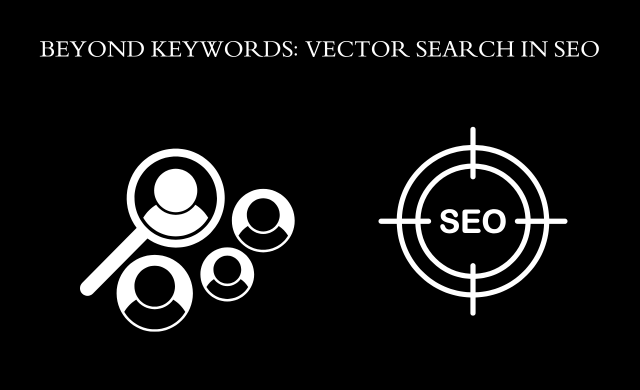Beyond Keywords: How Vector Search Is Changing SEO

The world of search engine optimization (SEO) is changing at an unbelievable pace, and one of the most revolutionary changes is definitely the growth of vector search. It’s so far in the past when SEO focused only on the use of keywords in your content. Nowadays, technologies like semantic search, natural language processing (NLP), and machine learning are significantly changing the way people find the information they need on the Internet.
Vector search is the core of this change, providing a more intelligent, context-aware method of finding the most relevant results. Companies such as Advait Labs, a leading AI and data solutions provider based in Hyderabad, that are already using this innovation to improve content visibility and search performance.
What Is Vector Search?
Vector search is a technique that uses mathematical representations (vectors) of text, images, or other data to find similarities between them. Unlike traditional keyword-based search—which matches exact terms—vector search focuses on semantic meaning.
In simpler terms:
Instead of matching the phrase “best laptop under 50,000,” vector search understands the intent behind the query—such as budget laptops with good performance—and fetches results accordingly, even if the words don’t match exactly.
Why Is Vector Search a Big Deal for SEO?
Traditional search engines relied heavily on keyword density, backlinks, and metadata. While those still matter, vector search introduces a whole new layer of sophistication:
- Better understanding of user intent
- Improved relevance in search results
- Smarter handling of long-tail and conversational queries
- Enhanced voice and AI-powered search experiences
It aligns perfectly with how modern users search—using natural language, questions, or even vague descriptions.
How Does Vector Search Work?
Vector search uses AI models like BERT, Siamese networks, or transformers to convert data into vector embeddings. These vectors are placed in a multi-dimensional space where similar items are close together.
When a user searches for something, the search engine also transforms the query into a vector. It then retrieves results that are semantically close, not just textually matched.
This process supports semantic SEO, where the meaning of content is more important than exact keyword placement.
What Does This Mean for Content Creators and Marketers?
1. Focus on Topics, Not Just Keywords
It is evident that search with vectors emphasizes the search for keywords that are less specific to a certain topic but more high-value informative content that is able to answer the user’s questions. Employing related entities, synonyms, and contextually rich information.
2. User Experience Becomes Key
Recognizers can comprehend how beneficial your material is for a user. A well-structured article that directly answers questions, includes internal links, and provides value is likely to rank better.
3. Visual and Voice Search Are Rising
Visual vector search enables visual search devices (i.e. Google Lens) and voice assistants (i.e. Alexa, Siri). The tuning content for voice search is the conversational way of speaking with questions.
How to Adapt Your SEO Strategy for Vector Search
Here’s a quick checklist to future-proof your SEO:
- Use natural language in your content
- Answer specific user queries clearly
- Structure content with headers, bullet points, and FAQs
- Incorporate semantically related terms
- Create content that reflects topical authority
- Leverage internal linking to signal content relationships
- Optimize for voice and mobile search
By aligning your SEO with these practices, you’re not just playing the ranking game—you’re becoming a trustworthy source.
Is Vector Search the End of Keywords?
Not quite. Keywords still matter, but they’re no longer the star of the show. They now play a supporting role in a much larger performance—where context, quality, and user intent take center stage.
The Future of SEO Is Here
Vector search is ushering in an era of context-aware, intelligent search. Whether you’re a content creator, a digital marketer, or a business owner, now is the time to embrace this change.
If you want your content to be discovered, it’s not just about ranking—it’s about relevance.
Summary
Times when search engines were smothered with specific words are gone. As this search develops, SEO is turning out to be more clever, user-oriented, and context-based than ever before. If you still rely on old SEO techniques, you need to change your approach. Know your audience, create content for people, and employ tools such as the vector search to keep your competitive edge. Whether you operate a small blog or a tech company like Advait Labs, adopting such a change can be beneficial for you not only to get higher rankings but also to effectively communicate with your audience.
FAQs
1. What is vector search in SEO?
Vector search in SEO means using vectors to be representatives of content and queries in order to find semantically similar results. This is a conceptual search while a keyword search is only a lexical one.
2. How does vector search improve search engine results?
The vector search result is like a focus on the context and the intent of the user. It gives more relevant answers, especially for conversational or long-tail queries.
3. Is vector search replacing traditional keyword SEO?
Vector search is not substituting completely the keywords, however, it weakens their influence. The new SEO strategies are focusing on topic authority, semantic relationships, and user-focused content.
4. How can I optimize my content for vector search?
Concentrate on the production of the content that is intended to provide the correct answer for the users’ questions, written in a natural language and including semantically related topics. Besides, make content more readable and engaging.
